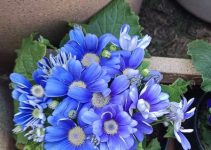Chervil
Anthriscus cerefolium
Punch up the flavor of springtime dishes with the low-calorie, big taste of chervil. This fuss-free herb thrives in garden beds or containers, growing easily from seed. Snip chervil to give an herbal boost to salmon, asparagus, new potatoes, cream sauces, and baby lettuce salads. Leaves blend a sweet, grassy taste with a hint of licorice. Chervil prefers moist soil and shaded roots. Plants don’t transplant well; sow seeds where you want them to grow. Scatter seeds in beds or containers several times throughout the growing season for continuous harvest. In the garden, let a few flower stalks set and drop seed to enjoy continued chervil crops.
Light: Part sun, Sun
Type: Annual, Herb
Height: 1 to 3 feet
Width: 1 foot wide
Flower color: white
Seasonal features: Summer bloom
Special features: Attracts birds, Good for containers, Low maintenance
How to Grow Chervil Indoors
Seeds of indoor chervil plants should be planted into their permanent container or started in biodegradable seed starting pots that can go directly into rich, organic soil. The tap-rooted plant does not transplant well.
Plant the small seeds shallowly. Keep the soil moist, but not soggy, to avoid the seeds rotting or damping off after germination.
Caring for Chervil Plants
Chervil plants reach 12 to 24 inches in height. Caring for indoor chervil plants should include frequent clipping of the new growth on the top of the plant. Clippings of the plant are best used fresh. Regular trimming of top leaves makes the plant bushier and more attractive and slows the tendency of growing chervil indoors to bolt.
If bolting happens often when growing chervil indoors, start new plantings every few weeks to maintain a continuous supply. When plants seem to be going to seed quickly, decrease the sunlight and move the container to a cooler location. Use fresh seed for the best germination rate when growing indoor chervil plants.
Companion plants for growing chervil indoors can include tarragon, chives and parshly, also used in the French fine herbes mix. Locate indoor chervil plants in the container so they can be shaded by the other herbs.
Uses for Indoor Chervil Plants
Growing chervil indoors, in or near the kitchen, makes it convenient to use the herb in many dishes you may be preparing. Now that you’ve learned how to grow chervil indoors, use clippings often. The frilly leaves of chervil plants may be finely chopped and added to omelets or other egg dishes. Chervil flavors young vegetables, soups, salads, casseroles and a range of other recipes.

